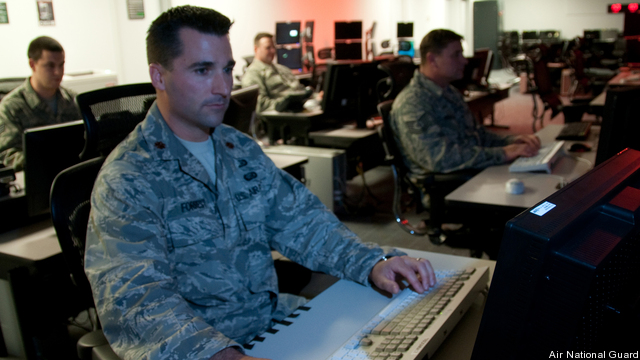Lockheed Upgrades Joint ISR System With Free Open-Source Software
Posted on
 ARLINGTON, VA: At $2.6 million, the contract award that Lockheed Martin will announce today to upgrade something called the Distributed Common Ground System is a rounding error in the aerospace giant’s $46.5 billion annual revenue. But in an age of austerity, when mega-programs like Lockheed’s flagship Joint Strike Fighter are under ever-increasing scrutiny, small can be beautiful. The DCGS approach — modest, incremental, and based on free open-source software — is an interesting model for a difficult era.
ARLINGTON, VA: At $2.6 million, the contract award that Lockheed Martin will announce today to upgrade something called the Distributed Common Ground System is a rounding error in the aerospace giant’s $46.5 billion annual revenue. But in an age of austerity, when mega-programs like Lockheed’s flagship Joint Strike Fighter are under ever-increasing scrutiny, small can be beautiful. The DCGS approach — modest, incremental, and based on free open-source software — is an interesting model for a difficult era.
DCGS does what’s called “fusion,” combining “intelligence, surveillance, and reconnaissance” (ISR) data from different kinds of drones and manned aircraft into a single coherent picture for analysts on the ground. The different services all have their different variants, with something called the DCGS Integrated Backbone (DIB) supposed to connect them. That’s the kind of complex IT integration challenge that has bedeviled programs like the Joint Tactical Radio System (JTRS) and the Army’s Future Combat System (FCS) — for which Lockheed also did fusion work before its cancellation in 2009 — and at one point DIB seemed headed down that same, well-trodden road to nowhere.
“DIB started in 2003 and kind of wallowed,” said John Murphy, of Lockheed’s C4ISR Systems Division, in an interview with Breaking Defense during Lockheed’s annual media day on Tuesday. “But it’s coming back strong.” Part of the turnaround is thanks to new commercially available technology, he said, but part is thanks to the forcing function of tight budgets. Instead of what Murphy calls “that kind of nirvana-ish vision [of] wholesale replacement” — the model of JTRS and FCS — the services have been forced towards a more technically and fiscally feasible approach of step-by-step upgrades building on what they already have. So while the DIB upgrade contract that Lockheed will announce today, called “version 4.x,” is just $2.6 million, it’s just the latest in many incremental improvements Lockheed and others have made to different aspects of DCGS.
“One size does not fit all here,” Murphy said. The Air Force version of DCGS is centralized in 45 major sites, while the Army’s is distributed hierarchically down the echelons from brigade to battalion to company to platoon; the Joint IED Defeat Organization tends to go for the latest version, while the Navy hangs back. Getting all the variants to work together was “kind of getting out of hand,” Murphy said bluntly, but a single “big bang” replacement was impractical. So the DCGS Integrated Backbone turned to a modular approach — Murphy likens it to the App Store for the iPhone — where each US or coalition service could use the parts it wanted while still being able to plug into the others.
That modular approach, in turn, depends on open-source software. When a service used “the old DIB,” Murphy said, “you had to pay like a million bucks in licensing” for proprietary software. “Now it’s been revamped using commercial technology out there in the open-source community,” he said. “Not only is it free, it’s a lot more modern.”
“There is nothing Lockheed Martin proprietary in what we’ve been building for the DIB,” said Murphy. “[We] write as little code as possible because so much capability is already out there.” Compare the cancelled Future Combat Systems program, which was developing its own operating system with an estimated 100 million lines of proprietary code.
Not every defense program can take this path: There’s a thriving commercial and open-source sector working on all sorts of software, but for stealth aircraft or lightweight vehicle armor, not so much. But in an era of warfare in which the physical performance of the “platforms” — ships, planes, tanks — has in many ways plateaued, there’s a lot of potential for leveraging civilian innovation to get modest, modular upgrades to the information systems those platforms carry.
Subscribe to our newsletter
Promotions, new products and sales. Directly to your inbox.
